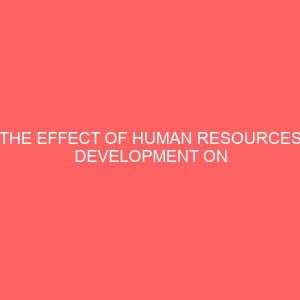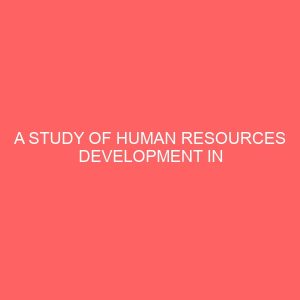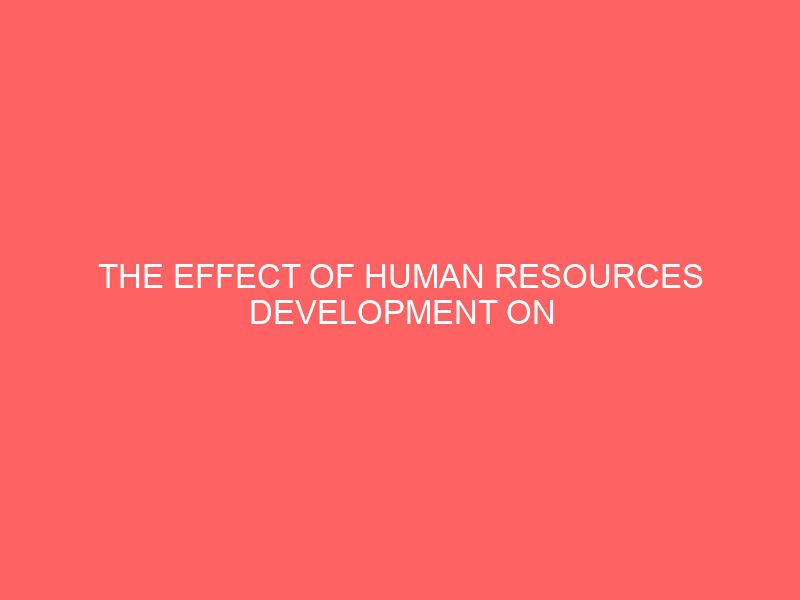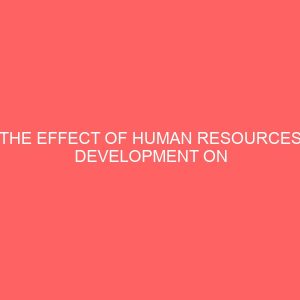Description
CHAPTER ONE
INTRODUCTION
1.1 BACKGROUND OF THE STUDY
Training and development of human resource have been considered an expend able luxury in terms of financial constraints. The growth and development of any organization depends on its human resources specific cost of management to develop individual skills or a means of developing people for promotion to the next level of organizational leadership. While these views carry some validity it is rapidly becoming apparent that the development of human resources should be regarded in the large context of trends in society and the need of changing organization.
The past not much importance was attached to the role or human resource development on the growth and efficiency or organizations. No pride of place was given manpower planning and development as a safe way to enhance skills knowledge and capacities of personnel in organizations. The importance of investing in human resources has become much clear in recent years because of mounting evidences on the extent of which such investment and it live with other factors in development act an engine change.
Although human resources management is that subsystem of an organization which is directly concerned with planning controlling the procurement development compensation integration and maintenance of the human resources component of the organization. The effectiveness of this subsystem will be judge by the way her polices and practices affect the performance and productivity of individual workers will be achieved towards the realization of the effectiveness of the organization.
TABLE OF CONTENT
Cover page
Title page
Approval page
Dedication
Acknowledgment
Abstract
Table of content
Introduction
1.1 Background of the study
1.2 Statement of the study
1.3 Purpose of the study
1.4 Scope of the study
1.5 Research questions
1.6 Research hypothesis
1.7 Significance of the study
1.8 Limitation of the study
1.9 Definitions of terms
Chapter two
Review of related literature
2.1 The historical background of human resources development in Nigeria and human research and Nigeria
2.2 Plans for governmental policy on training and development of human resources
2.3 Human resources development at industrial training fund ITFEnugu
Chapter three
Research design and methodology
3.1 Research design
3.2 Area of the study
3.3 Population of the study
3.4 Sample and sampling procedure technique
3.5 Instrument for data collection
3.6 Validation of the instrument
3.7 Reliability of the instrument
3.8 Method of data collection
3.9 Method of data analysis
Chapter four
Data presentation and analysis
4.1 Presentation and analysis of the data
4.2 Testing of hypothesis
4.3 Summary of results
Chapter five
Discussion recommendations and conclusions
5.1 Discussion of results finding
5.2 Conclusion
5.3 Implications of the research findings
5.4 Recommendations
5.5 Suggestions for further research
Bibliography
Appendices








Reviews
There are no reviews yet.